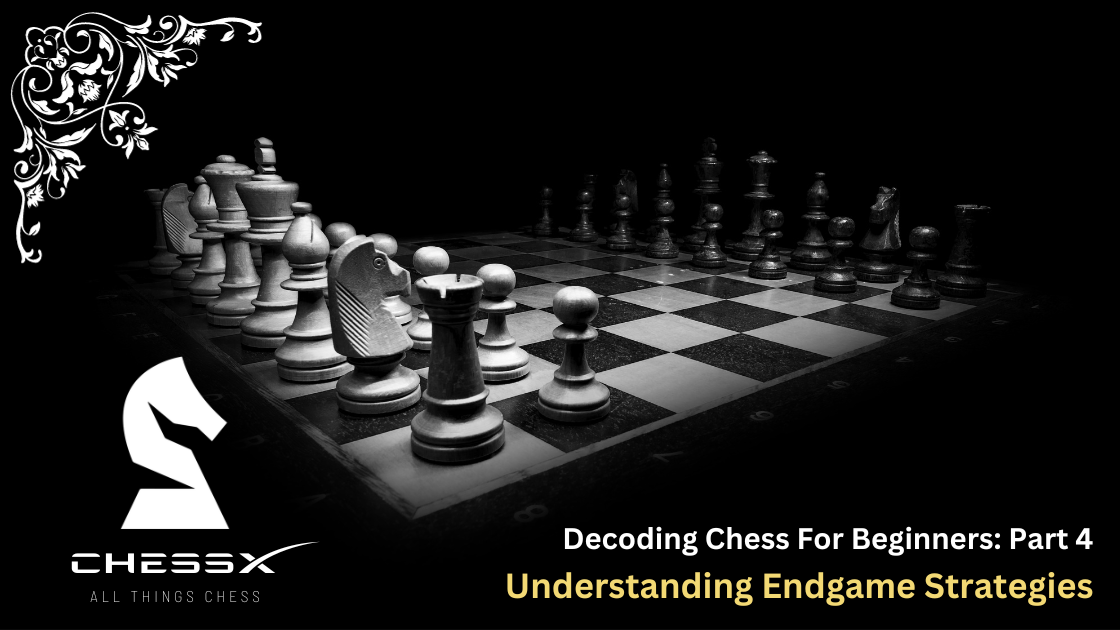Decoding Chess for Beginners: Understanding Endgame Strategies

In the fourth installment of the Chess for Beginners series, we delve into the essential guidelines for Endgame Strategies.To gain the most from this discussion, we encourage you to read the complete blog.
Playing for the elusive lucky win, though rarely discovered, has certainly earned a distinct reputation within the chess community. \
This situation is often referred to as 'playing for a cheap shot' or simply a 'cheapo.' We are confident that a special place awaits the underdog player who can master such a technique and earn the nickname of a titan, but we digress.
To ensure consistency in securing a winning endgame, several quintessential principles should be followed:
- When you are ahead in material force (number of pieces), trade judiciously, akin to a hawker at a Chinese flea market.
- Mitigate last-minute blunders by tempering your ego and opting for safer moves.
- If you possess a secure advantage, take your time to thwart any potential counter play from your opponent.
While pursuing advantageous trades, remember that material superiority, although a prominent path to overall victory, does not hold exclusive dominion in chess strategy.
Failing to maintain the forceful development of your army may expose you to surprises, whether through your opponent's superior pawn structure or their strategic mobilization. Strive to strike a balance between defense and a proactive hindrance that advances your own plans.
Do not neglect your positional development, reinforce your material advantage if you have one, and decisively eliminate any remaining threats from your opponent to extinguish their last hopes. Be vigilant and prevent them from making you regret missed opportunities.
In light of this, we've compiled a list of general tips to assist you, especially in the latter stages of the game.
14 Must Know Tips for the Endgame
Tip No 1: Bring Out the King
If the board is left with only pawns and perhaps one or two other pieces, consider deploying your king as a strategic attacker and defender. A winning endgame often involves having an active and centralized king.
However, if you still maintain a significant number of pieces for defense, moving your king might not be the best course. Focus on using other pieces to attack while keeping your king in a secure position.
Tip No 2:Strategize Your Next Move
Contrary to common belief, tactics and calculation are crucial not only in the middle game but also in the endgame, especially with fewer pieces on the board. Analyze your moves carefully, whether it involves simple calculations like a passed pawn race or more complex variations.
Develop the ability to think at least five steps ahead, as each piece, no matter how insignificant, plays a vital role in endgame scenarios.
Tip No 3: Trade-off - Bishop or Knight?
In an open position with fewer board pieces, the bishop proves to be the stronger piece, while in closed positions with more pieces, the knight becomes the preferable choice. Consider the stage of the match when deciding to trade these two pieces based on the position of the board.
Tip No 4: Keep Pawns Together
Avoid isolating your pawns to prevent vulnerability against your opponent. Isolated pawns are challenging to protect and can lead to a waste of precious time or loss.
Also, be cautious of doubled pawns, as they can limit mobility. A well-calculated opening and midgame are essential to avoid late-game pawn issues.
Tip No 5: Choose the Right Time to Exchange Pieces
Optimal endgame tactics involve exchanging pieces to gain a material advantage or capitalize on an existing advantage on the board.
However, exercise caution when exchanging pawns, particularly if they play a crucial role in your endgame strategy.
Tip No 6: Move Pawns with Care
Plan your pawn moves carefully, especially when aiming for promotion to a queen. Utilize your king as the front-runner and advance the piece to the farthest point on the board.
While pawns can be sacrificed if it serves a greater purpose, ensure their sacrifice aligns with your overall strategy.
To access the entire blog, subscribe to our premium plans today and elevate your chess game to the next level. Get ChessX for all things chess.